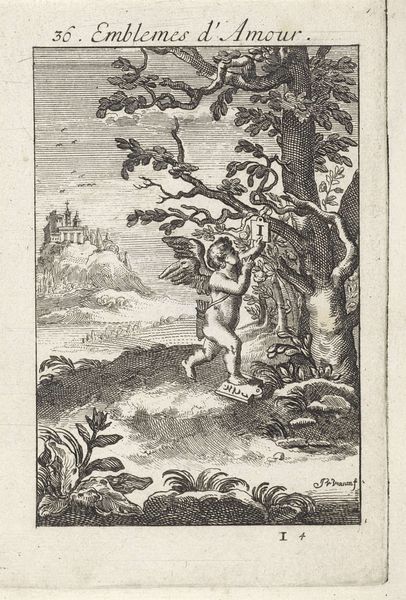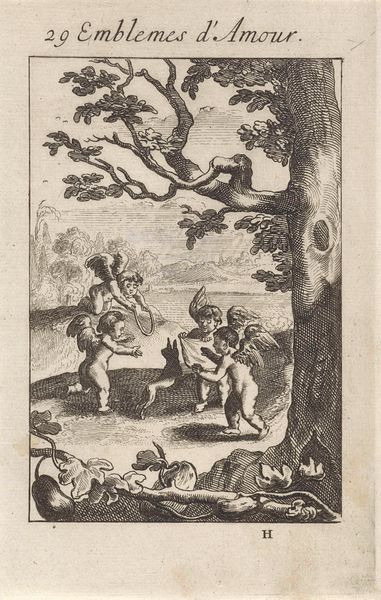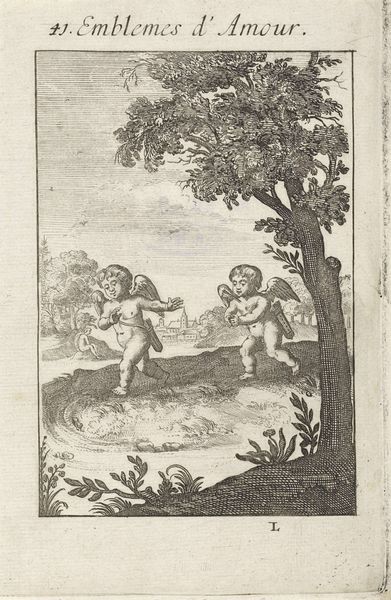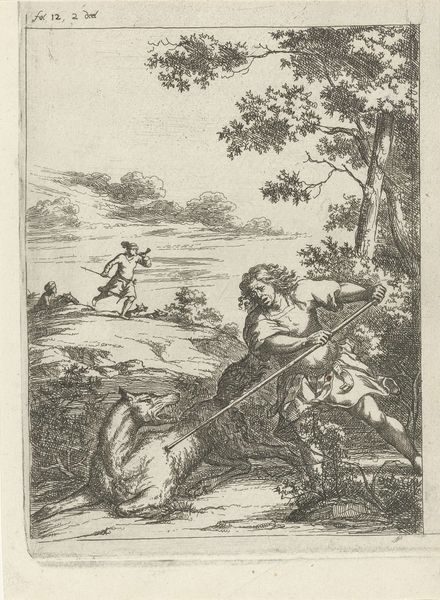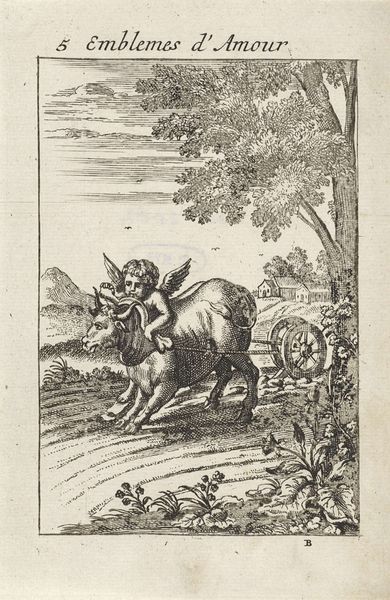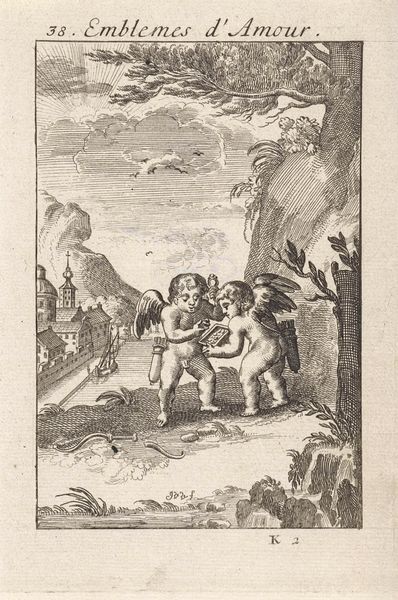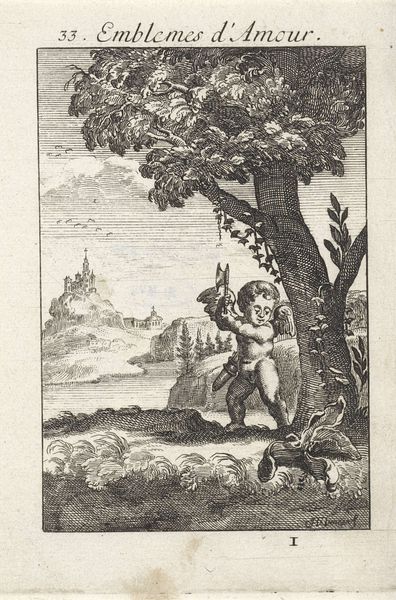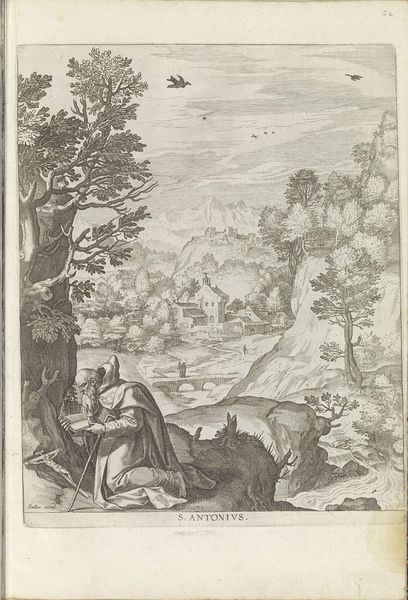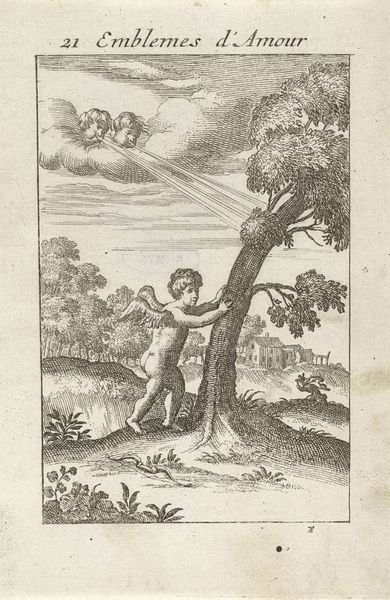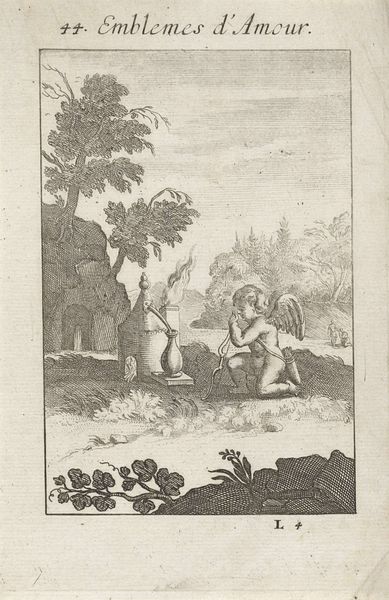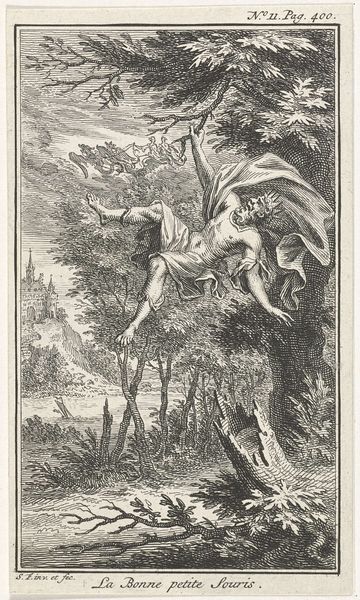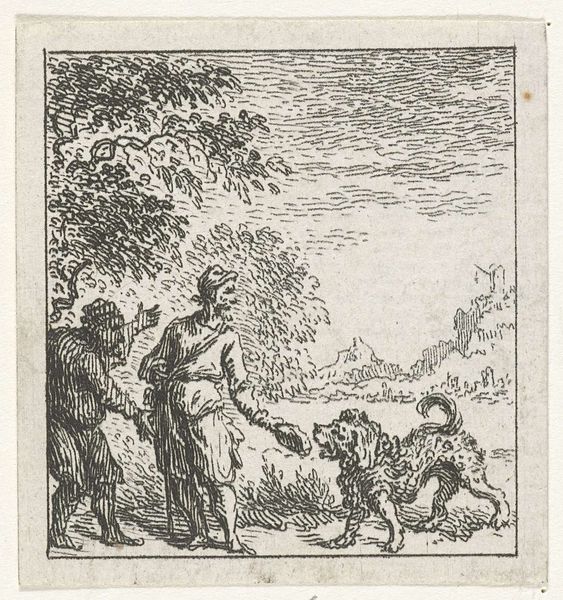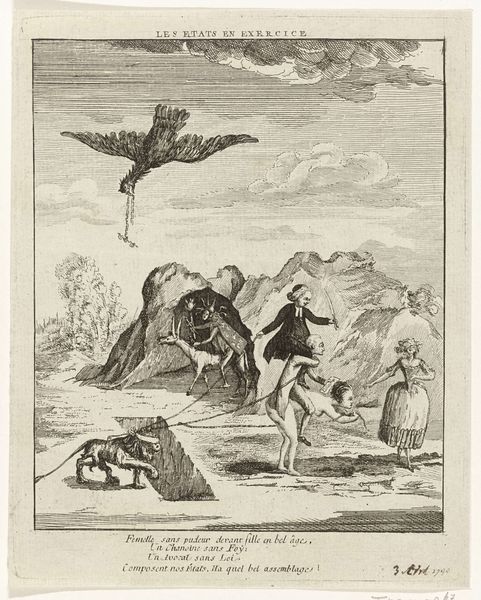
print, engraving
#
allegory
#
baroque
# print
#
old engraving style
#
history-painting
#
engraving
Dimensions: height 145 mm, width 95 mm
Copyright: Rijks Museum: Open Domain
Curator: Welcome. Here we have Jan van Vianen’s 1686 engraving, “Amor jaagt op twee hazen,” which translates to “Cupid chasing two hares.” It’s currently held at the Rijksmuseum. Editor: It’s striking. The dynamism immediately catches the eye; the scene is brimming with pursuit and anxious energy. There's a stark beauty in the contrast of lines— the density around the figures versus the open landscape, giving it almost an ethereal quality. Curator: Yes, Vianen was working within the conventions of the Baroque, imbuing the allegory with an accessible quality through printmaking. It’s intriguing how such a detailed scene could be reproduced and disseminated widely. The labor behind the etched lines themselves is something to consider, especially in the context of commercial artistic practice. Editor: I find the figure of Cupid particularly interesting. His form and positioning within the chase directs the gaze to the fleeing hares. The textural quality is achieved masterfully here; observe the difference between the shading that defines muscle and the etching suggesting feathered wings. The semiotics of this are clear; Cupid is the agent provocateur, urging instinct and desire onward. Curator: The choice of hares is also worth considering. Hares were commonly associated with fertility and timidity, suggesting that the pursuit of love may involve vulnerability, flightiness and ultimately, perhaps capture. The question becomes then, how might Vianen's print have circulated among particular social classes or gendered audiences, especially given contemporary attitudes toward hunting? Editor: A relevant question indeed, considering the art market would've catered to specific patron classes. Looking closely, one sees subtle cross-hatching giving depth to the flora. It is through these technical elements the artist shapes narrative—not just through symbolism but form itself. The material lends itself well to capturing movement but confines what it can deliver. Curator: I agree, examining both what's explicitly depicted and how the very act of making and selling shapes understanding offers a richer interpretation. Editor: Well observed; Vianen offers a case study of how form, skill and concept coalesce. Curator: It provides ample grounds to look at the social and commercial landscape that shaped not only his work, but also ours in interpreting and valuing it today.
Comments
No comments
Be the first to comment and join the conversation on the ultimate creative platform.
